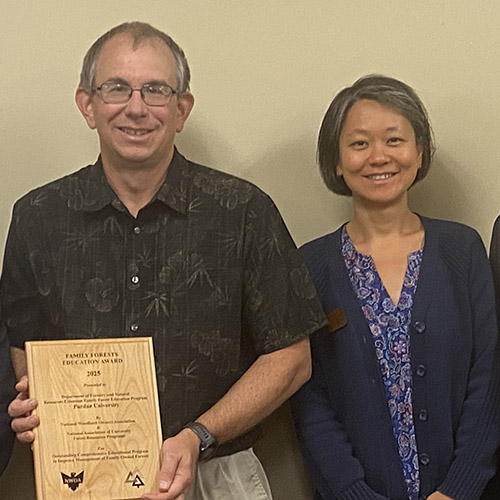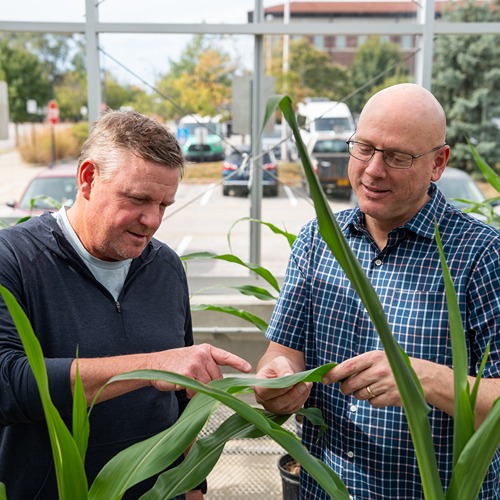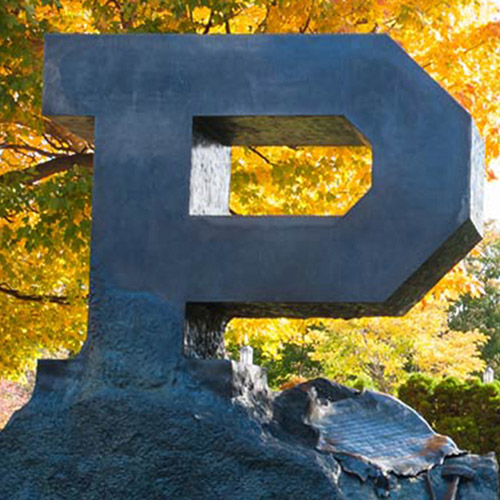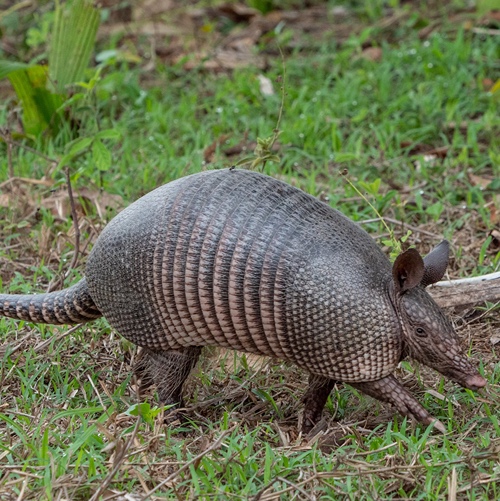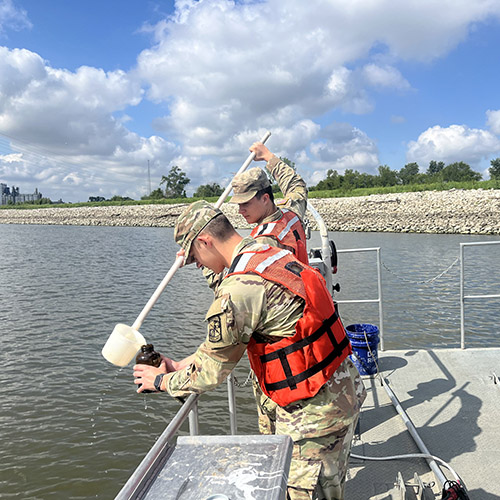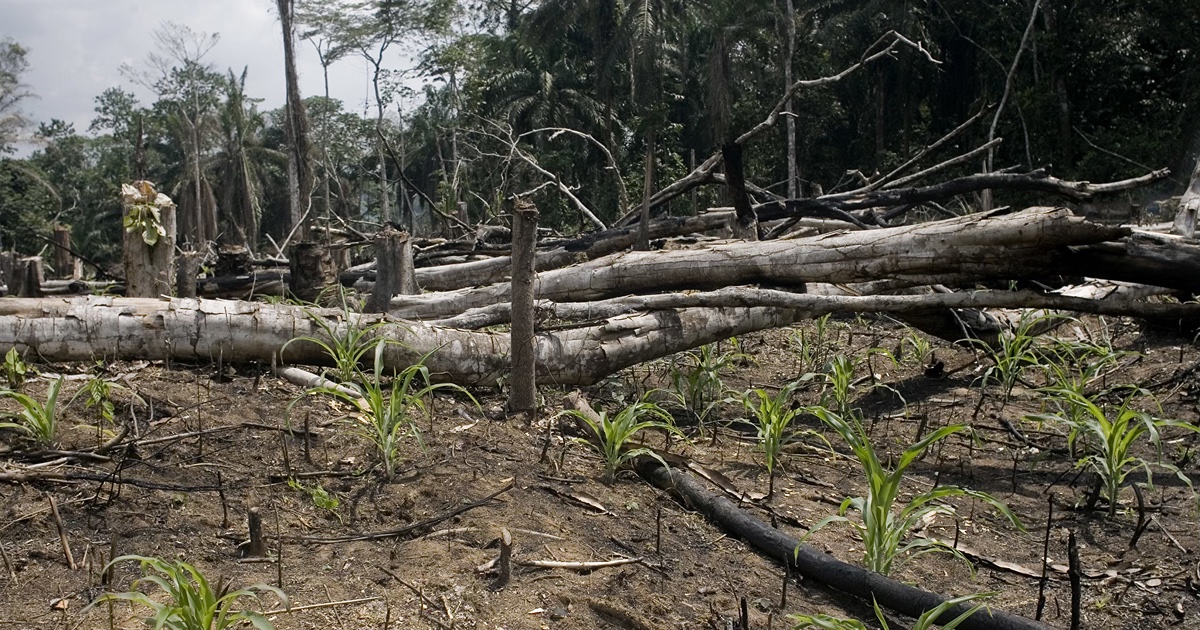Dr. Abhinav Tyagi Set to Study River Otters, Fish as Smith Fellow in FNR
Dr. Abhinav Tyagi grew up in the concrete jungle of Delhi, India, but it is in the actual jungle surrounding the city and across India where he has made an impact with his research.
city and across India where he has made an impact with his research.
Throughout his career, Tyagi has worked with species ranging from top carnivores like tigers and leopards to their large-bodied prey like Indian bison, sloth bears and sambar deer, to smaller carnivores like jungle cats and Asiatic wild dogs.
His work has focused on applying genomics to wildlife conservation and acting as a bridge between science and management.
“I have always been interested in understanding how wildlife is doing in a human dominated landscape, whether that involves studying connectivity among multiple species or examining how their diet changes with changes in disturbance to the habitat,” Tyagi explained. “I have worked across a broad spectrum of species in India because I wanted to understand how species with different traits – such as body size, social structure and trophic level – navigate the impacts of habitat fragmentation. I also work in one of the global hot spots of human-carnivore conflict, trying to understand what drives these negative interactions and how we can resolve them from a dietary perspective. I study tigers, leopards and Asiatic wild dogs to better understand the cause of the conflict and identify ways to mitigate it.”
That work in molecular ecology and conservation genomics is what landed him as a David H. Smith Conservation Research Fellow at Purdue for a two-year stint as a postdoctoral researcher in the lab of Dr. Andrew DeWoody.
But before we jump into Tyagi’s current work, let’s take a look back at the groundwork that paved his path to Purdue.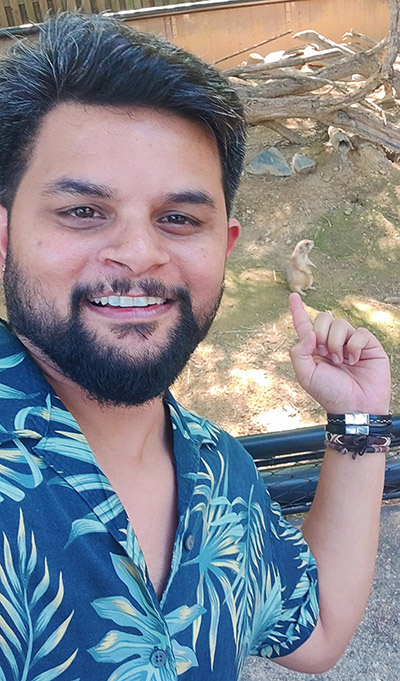
“I was interested in wildlife in general, but until my undergraduate studies I had little idea of how I could contribute -- or how I wanted to contribute,” Tyagi shared. “I was always drawn to science and genetics and wanted to find ways to apply them in real life. I completed my undergraduate degree in biomedical sciences (BS 2011, Delhi University), where the department was excellent in promoting research and providing exposure to undergraduates. I got my first taste of research there, and that experience propelled me to pursue research as a career.”
Tyagi went on to earn a master’s in biodiversity and conservation from GGS Indraprastha University (2013), because “there was a lot of opportunity to apply genomics into the conservation of endangered species.”
He then joined a PhD program at the National Center for Biological Sciences at Bangalore in India, where he worked on multiple projects. His research mainly looked at how different species respond to habitat fragmentation and the modification of landscape, whether man-made or natural, from forest clearance to different land-use changes due to road and railway lines.
“India is big on tigers and tiger conservation, but there is enough evidence that a single-species centric approach is not effective enough to manage co-occurring endangered species,” Tyagi said. “My PhD research provided an additional layer of evidence and data supporting that view. I am very glad to see the paradigm is shifting towards a multi-species approach.
“Bridging science and management has always been one of my motivations for pursuing research. For the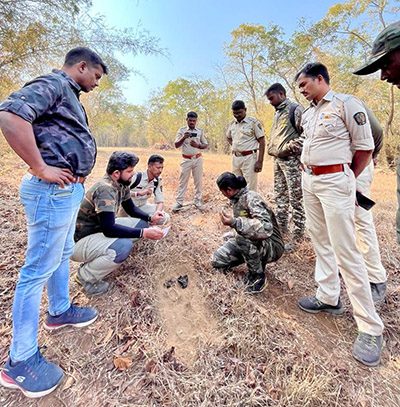 past eight to 10 years, I have been working with forest managers and scientists across India and other parts of Asia, trying to serve as a bridge between researchers and managers. Both groups work toward the same goal of wildlife conservation and bring their own expertise, experiences and authority, but they rarely work together. It was challenging at first, but I now collaborate with forest departments in several Indian states, and we have establishing amazing working relationship and had good success.”
past eight to 10 years, I have been working with forest managers and scientists across India and other parts of Asia, trying to serve as a bridge between researchers and managers. Both groups work toward the same goal of wildlife conservation and bring their own expertise, experiences and authority, but they rarely work together. It was challenging at first, but I now collaborate with forest departments in several Indian states, and we have establishing amazing working relationship and had good success.”
Like any good scientist, Tyagi kept his finger on the pulse of the genetics/genomics world as it relates to wildlife management. In 2021, he encountered the work of Dr. Andrew DeWoody and began following his work in population genetics and conservation genomics.
As Tyagi was wrapping up his PhD, he wrote DeWoody an email introducing himself and inquiring about the possibility of a postdoctoral position. The two met and “clicked” and began discussing the logistics of funding and making the position happen. One option was applying for a conservation research fellowship through the Smith Foundation.
The Smith Fellowship, which is administered by the Society for Conservation Biology, was established and named after the late Dr. David H. Smith, founder of the Cedar Tree Foundation and pediatrician, inventor and conservationist. The fellowship seeks to identify and support early-career scientists who will shape the growth of applied conservation science.
The fellowship website also states that: “While the Fellows’ research projects focus on urgent conservation issues, they also learn firsthand the challenges and rewards of conservation applications. The program’s focus is to enlarge their professional opportunities and ensure future success by helping them build relationships in the conservation and research communities and by providing opportunities for professional development through targeted workshops and training events.”
For Tyagi, the Smith Fellowship offered a “very prestigious and unique” opportunity. Only five fellowships are awarded per year and, since the program began in 1998, no one from India had ever received one.
“I knew the competition would be tough and that my chances were slim when I applied,” Tyagi said. “Andrew DeWoody and I agreed that if it didn’t come through, we would find other ways to work together. The Smith Fellowship is not only interested in you doing great research, great science, it is equally interested, if not more so, in how you will implement your research in solving the actual problem on the ground. That makes it very unique and is why I was so interested in applying.”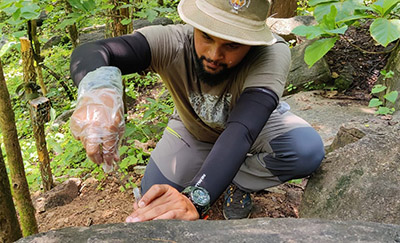
Unlike most fellowships, the Smith Fellowship requires each fellow to have two mentors: one academic mentor and one practitioner mentor, not just an academic principal investigator to work under. DeWoody will act as Tyagi’s academic mentor, while Geriann Albers, furbearer and gamebird research biologist with the Indiana Department of Natural Resources Division of Fish and Wildlife, will act as his practitioner mentor.
DeWoody is confident that this collaboration with Tyagi and Albers will result in a better understanding of river otter ecology and evolution, but also believes it will yield unanticipated benefits.
“Abhinav has a very bright, engaging personality and I’m certain that over the course of his time as a Smith Fellow, he will develop lifelong relationships that will benefit us all,” DeWoody said.
Albers also is excited about the possibilities of the collaboration.
“I’m really looking forward to working with Dr. DeWoody and Dr. Tyagi on this project,” Albers said. “Abhinav is smart and capable and Dr. DeWoody is at the front of some exciting new genetics techniques. This project will help us develop and implement research that will lead to positive conservation and management outcomes.”
Tyagi’s project is titled “Otters, Fishes and Genomes: Unveiling Population Connectivity and Diet to Mitigate Human-Wildlife Conflict.”
Although Tyagi’s previous research was on land-based mammals and he had not previously worked with otters, it was the possibilities of the project that drew him in.
“I am more interested in the questions we can answer using the methods we have at our disposal and what can be done with our research,” Tyagi explained. “River otters were extirpated from several states by the mid-1990s and huge effort, money and resources were put into bringing back the otters to these states. But, most of these reintroductions happened from one population in Louisiana. The demographic restoration is done and the numbers have come up, but we don’t know how they are doing in terms of the genetic connectivity/diversity.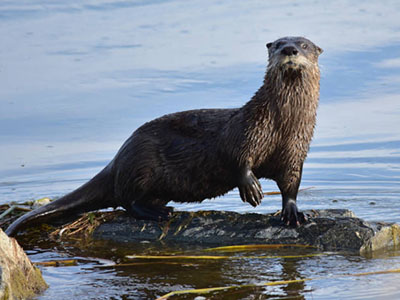
“Another issue I wanted to resolve is the conflict between otters and humans. When a wild species grows in numbers, it can have negative interactions with humans. With otters, people who go fishing are finding it difficult to catch large-bodied, older sportfish like they used to and they are blaming otters for it. We need data to prove if this is just a perceived conflict or a real conflict. One way to do that is to look at what the otters are eating, but that will not solve the problem. By looking at their diet, we would only be able to tell what species were present in the otter diet, not the age class of the fish they are eating. So, now I have to develop an epigenetic or molecular clock to age fish from otter diet. Epigenetic aging is a fairly recent area of research, so we are kind of the front runners in it, which makes it exciting and challenging.”
Unlike existing aging methods, which utilize blood or tissue samples and are often fatal to the fish, this project aims to use minimally-invasive methods. Specifically, Tyagi aims to develop a clock for aging certain economic or culturally important fish like large-mouth bass and bluegill through the analysis of the fecal samples of otters.
The methylation signatures will be used to develop epigenetic markers to determine the age of prey fish. Researchers will extract DNA from the fin clips of fish to develop and design the clock and will use fish DNA found in the otter feces to deploy that clock to age fish eaten by otters. This DNA also includes information identifying species, sex and age.
The diet results also will be compared to baseline data found through a previous project by Albers, DeWoody and FNR alumna Erangi Heenkenda (PhD 2024), which analyzed otter stomach contents to document the types of fish that otters were consuming. This comparison will allow a check to see if Tyagi’s results are showing the same fish diversity in diet.
The first step in the research is developing the clock. Once the clock is developed and researchers know which genetics markers are correlated with age, they will test their work through zoo-based feeding trials. After that, testing will be done through otter fecal samples in the wild, specifically in areas of Indiana where the majority of angler complaints about otters are occurring.
“The fish aging clock we develop during this project could have huge applications in fisheries management,” Tyagi said. “The results of this project will first help in otter conservation, not only in Indiana but wherever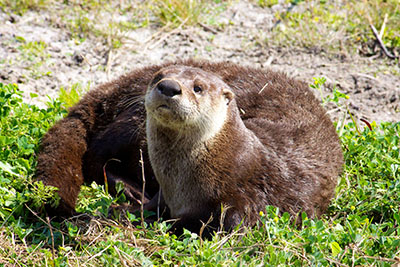 river otters are found. Second, it will not only improve or maintain their genetic connectivity, it will also reduce their tussle with anglers through data-driven outreach. If the conflict is merely perceived, then it becomes a fisheries management question: either fish are not attaining their usual size or their numbers are declining. Finally, the clock we develop will provide a valuable tool for fisheries management as well.”
river otters are found. Second, it will not only improve or maintain their genetic connectivity, it will also reduce their tussle with anglers through data-driven outreach. If the conflict is merely perceived, then it becomes a fisheries management question: either fish are not attaining their usual size or their numbers are declining. Finally, the clock we develop will provide a valuable tool for fisheries management as well.”
Albers agrees with Tyagi and foresees a positive impact from the research in multiple conservation areas.
“This work is an amazing opportunity to improve Indiana’s ability to manage wildlife that people really value in river otters and sportfish,” Albers said. “This project will help ensure we can sustain the genetic health of our otters long into the future, provide us with a method of non-invasively aging some fish species that will support fish management efforts and provide us techniques to better assess river otter diets to help resolve potential conflicts. It could be a real game changer, the results of which we’ll use for decades in the future.”
